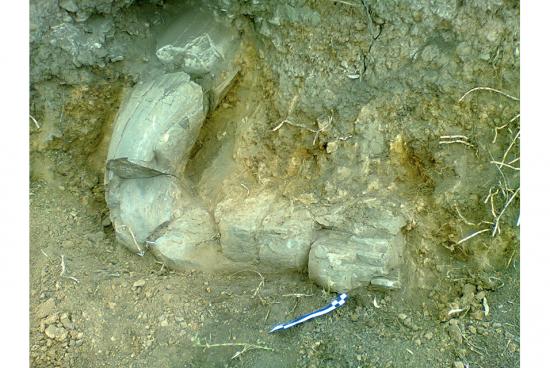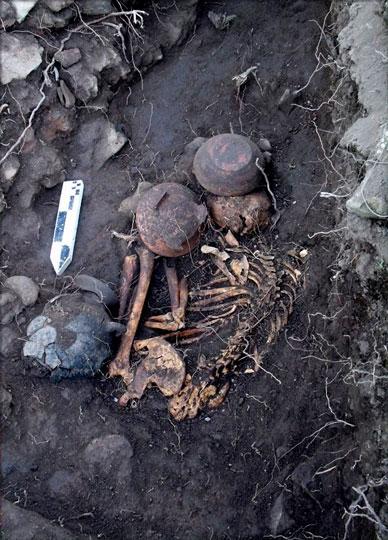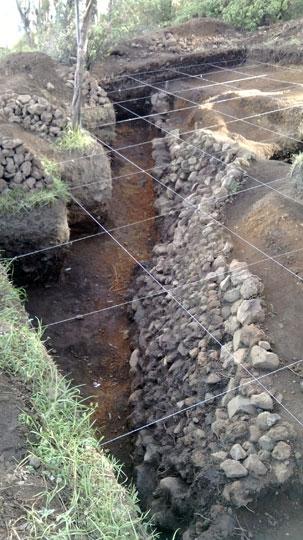Archaeologists find mammoth's tusks used during pre-Hispanic times as an offering
Source - http://artdaily.com/news/71563/Archaeologists-find-mammoth-s-tusks-used-during-pre-Hispanic-times-as-an-offering-?#.U8lK1vl_vVQ
Photos = Centro INAH Estado de México
Descubren defensa de mamut usada en ofrenda prehispánica
Source - http://www.inah.gob.mx/boletines/17-arqueologia/7264-descubren-defensa-de-mamut-usada-en-ofrenda-prehispanica

Defensa de mamut expuesta que fue hallada en el Cerro de los Magueyes, en Metepec, Estado de México.
A mammoth’s tusks —whose approximate antiquity is 10 thousand years before our time—, used in pre-Hispanic times as an offering to consecrate the beginning of a construction, was discovered by specialists of the National Institute of Anthropology and History (INAH) in Cerro de los Magueyes, municipality of Metepec, Estado de Mexico. Investigators from the INAH Center of Estado de Mexico, found the remains of the extinct animal, as part of their archaeological salvage.

El resto óseo del animal extinto estaba colocado en un estrato de tepetate.
The tusks were placed in a tepetate (limestone) stratum, covered by ceramic fragments, ashes, carbon and some carbonized seeds, which is why archaeologists conclude that it was an offering placed there by ancient inhabitants of Olmec influence during the Middle Preclassic era (1000 – 400 BC).

Entierro con ofrenda del periodo Preclásico Medio. (1000 - 400 a.C.)
“Over this offering, the inhabitants placed floors and walls in order to edify. In the Valle de Toluca archaeologists have found mammoth remains, as well as in the municipality of Metepec, but never an offering such as this, which is the first of its type in the region”, said Maria del Carmen Carbajal Correa, who was responsible for the salvage. To archaeologist Paz Granados Reyes, who also participated in the salvage labors, the offering discovered in the hill is extremely important because it is a very early “building” tribute, since it was made in the Middle Preclassic era. “Being almost three meters (9.84 feet) long, the remains were carried to the hill from the marshlands. The appropriation of this element must have had ritualistic meaning, since it was given great symbolic value from nature and used as an offering”, explained archaeologist Maria del Carmen Carbajal. Another finding registered in Cerro de los Magueyes (to the east), are the walls that date back to the Middle Preclassic era. “This is meaningful because the elements are the first vestiges of architecture in the whole Valle de Toluca”, added the investigator Paz Granados. El Cerro de los Magueyes, a sacred place • This region, which belonged to Valle de Toluca from the Preclassic era (1000 BC) to the Late Postclassic period (1521 AD), groups with Olmec influence were present; in the Classic period some groups from Teotihuacan arrived, and during the Postclassic they hosted groups of Malatzincas and Mexicas. • In 1993, at the top of the hill (north), archaeologist Maria del Carmen Carbajal Correa found a cemetery with the remains of Matlatzincas and Mexicas, which leads investigators to conclude there was cohabitation among these groups during the Late Postclassic.

Los muros hallados muestran cómo durante su construcción los fueron adaptando al terraceo natural del cerro.

Cerámica localizada durante el salvamento arqueológico